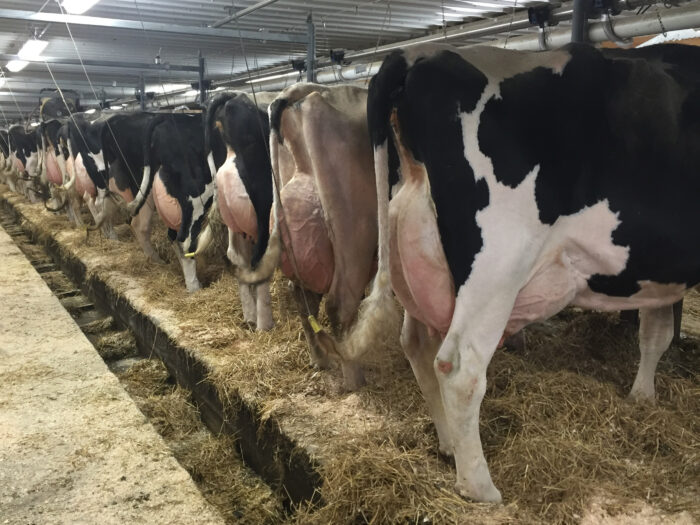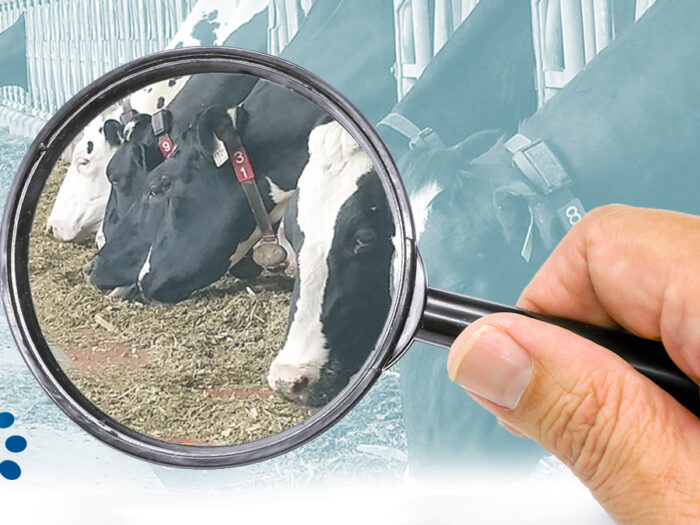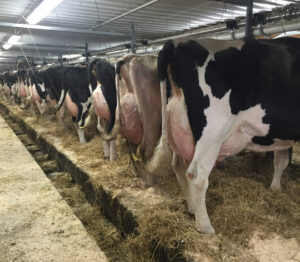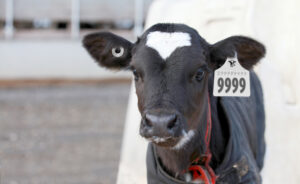
Cow Ranking by Income (CRI)
Which Cows Bring in the Most Revenue?
The Cow Ranking by Income (CRI) report is a new national ranking system for cows in your herd that are enrolled on milk recording. It is expressed in dollars and percentiles, which reflect the milk revenue of cows from birth. It available to producers once a year, a few weeks following the release of the Herd Performance Index (HPI).
The CRI was created in response to a request from producers for an easy tool to identify their best cows within the herd and rank them across animals in Canada.1
A New Fairer Basis for Comparison
Analyses conducted by Lactanet researchers found that cow performance comparisons were much more accurate when the cows were at a similar life stage, rather than comparing them at the end of a lactation, at their calving age, or at their number of parities. It was therefore determined that an animal’s birth date would be used to calculate their cumulative milk, protein, and fat production.
The average price of milk components in Canada is used to calculate the revenue on their birthday and this is also the same price used for the HPI calculations. The annual component price adjustments allow revenues to be updated based on recent Canadian market values.
The birth date serves as a uniform reference between animals.
| Using the Birth Date as a Basis for Comparison | Pros |
| Ranking is independent of the duration of the lactation. | Regardless of the calving interval (short or long), cows are compared based on the same fair parameter at their birthday. |
| Revenue per cow is calculated using the average milk price paid to farmers in the year prior to the calculation. | The milk price paid to producers evolves based on Canadian needs. For example, in recent years, there has been an increase in the price of a kg of fat versus a kg of protein. The revenue therefore reflects the recent reality of the Canadian market. |
| The ranking is based on the same principle as the Pro$ genetic index: profit accumulated ‘at 6 years of age.’ | The Cow Ranking by Income is a relevant result that reflects the strategic direction of the dairy industry. |
Eight age classes were created to compare the revenue for cows at 3, 4, 5, […] and at 10 years old and over (grouped). | This feature can be used to track the evolution of the cows’ success over time as they mature. |
How is the CRI Calculated?
- At the beginning of a year, all active cows on milk recording on their anniversary date of the previous year have their Age Class Milk Income ($) calculated.
- Cows are grouped based on their breed and age: 3, 4, 5 years old…
- All cows are attributed a National percentile rank corresponding to their milk revenue based on their age class.
CRI Characteristics2
- The percentiles provide the national ranking of each cow.
- The ranking is breed specific (HO, JE, AY, BS, CN, GU and MS).
- The ranking is calculated according to the following age classes (years): 3, 4, 5, 6, 7, 8, 9, 10+.
- The report is published once a year and the percentile ranks are updated based on the cow population and recent price of milk components.
The Cow Ranking by Income report

Animal Identification
- Visible ID No. or Name of the animal, based on the farm manager’s preference.
- ID No.* corresponds to the last 9 digits of the number: If the Perm. ID No. of a cow is 124000 123456789, the last 9 digits will appear in the report.
Cumulative production:
Cumulative production of milk, fat and protein on the cow’s birthday.
Age at 1st calving:
Age at first calving in a year-month format (YY-MM).
No.:
Number of parities in the current cycle on the cow’s birthday.
Cumulative data:
Production parameters of the animal on its birthday.
- DIM: Cumulative number of days in milk.
- DIM (%): Percentage of days in milk over the number of days dry since the first calving.
- Days dry: Number of days dry since the first calving.
- Productive life (%): Percentage of days in milk since birth.
$/day of life:
Milk value on the cow’s birthday divided by the number of days since birth.
Age class milk income ($):
Cumulative production on the birthday multiplied by the national average price of components for the year.
National percentile rank:
National ranking of the animal based on its breed and age.
Pro$:
A national selection index that evaluates the animal's genetic potential to generate profit (income minus expenses) at 6 years of age. The Pro$ is included as a guide, it is not used in the CRI calculation.
Frequently Asked Questions
The CRI is an innovative method to rank cows according to the milk income they generate.
It calculates the cumulative production of a cow (kg of milk, fat and protein) on the day of her most recent birthday: 3 years, 4 years, 5 years, 6 years, etc.
From this cumulative production on the birthday, the value of the milk produced is calculated in $ based on the average Canadian price paid to producers for each of the milk components (Fat, Protein, SNF). This monetary value is expressed in two ways:
- Milk Value on the birthday (usually several thousand dollars)
- Milk Value per day of life: Milk Value at birthday/number of days since birth (usually a few $/day)
Through various analyses, Lactanet researchers have identified that the anniversary date is the best reference to adequately compare cows’ production among themselves. All cows differ according to their age at first calving, their calving interval, the length of their lactation or dry period, the number of calving at a mature age (at 6-years-old for example). Some cows may have lactation shorter than 305 days, which is known to affect BCAs. The anniversary date becomes a uniform reference between animals that excludes the major factors that can influence animal comparison.
Cows can have very different production profiles, some are strong in milk with low components, others are strong in one or both components. It can be difficult to compare cows that have different fat and protein yield profiles. Thus, assigning milk values based on producer payment is intended to compare cows to each other based on an economic value, the income from their milk. Also, component prices vary over the years. Using updated component prices each year will provide a better link with current income values.
The birthday classes have been established at 3, 4, 5, 6, 7, 8, 9 and 10 years and more. There are seven breeds considered: HO, AY, BS, JE, CN, MS, GU.
There are no distinctions or classes according to whether the cows perform in free stall or stanchion, 2X, 3X, or robotic milking.
At the beginning of a year, all Canadian cows that had their birthday the previous year are grouped by age and breed which creates classes. For example, at the beginning of the year 2023, cows that had their birthday in 2022 are grouped according to classes. For each of these groups, a percentile ranking is established. The best cows are assigned a 99-percentile rank, while the middle cows are assigned a 50-percentile rank and the weakest a 1 percentile rank. Since there can be a large variation in the number of cows in a class (more 3-year-olds than 10 years and older), there will be a different number of cows per percentile rank.
It can be difficult to qualify a cow’s performance based on $ values without having comparison figures or a reference for the class. How good is $15,000 in milk revenue for a 5-year-old cow vs a 6-year-old in the Canadian Jersey population?
The percentile rank facilitates interpretation, ranking among animals in a class and over the years: “I have a good cow with a percentile rank of 85 at 3 years old that went up to 90 at 4 years old … she had a better year than the other cows in her class.” Users will also be able to refer to a table of percentile ranks published annually where they will find the minimum milk income thresholds according to the main percentile ranks 99, 90, 75, 50 for each class.
The CRI values are available in a new Lactanet report Cow Ranking by Income for your herd. It is generated in March of each year and is available online (your Lactanet MySite account). Active cows in the herd on their birthday are included in the report. Cows are grouped according to their class (i.e., age and breed, if there are multiple breeds in the herd). The average of the cows per class is shown at the bottom of each class.
The right-hand columns of the report show the three reference values:
- $/day of Life
- Milk Value at birthday
- National Percentile
The Pro$ value of each animal is listed as a reference on the far right.
Cows in the herd are ranked in order of milk income, with the best-performing cows at the top. The percentile rank allows each cow to be compared to other cows across Canada. For example, some herds may have their best cow with a percentile rank of 99% while others may have their best cow at a lower value. Herds with high production averages will be favoured but many other factors may be important.
The CRI is a measure of the current income of each cow. It is intended to compare cows according to their accomplished performance, often referred with the term “phenotype”. The Age Class Milk Income ($)will increase on each birthday since active cows cumulate milk produced each year.
Pro$ is a measure of an animal’s genetic potential to generate profit (i.e., revenue minus expenses). It indicates the profit at 6 years of age. It is a value that will be passed on to the progeny. The daughters of a 2500 Pro$ bull will generate on average $1,000 more profit at 6 years old than the daughters of the 1500 Pro$ bull. The Pro$ of an animal tends to decrease with age since older animals have lower genetic values.
Improving production will have a strong influence on CRI values but there are other strategies to improve rankings:
- Reduce Age at First Calving;
- Optimize the Dry Period;
- Improve Fat (kg & %) – the most valuable component of milk price;
- Improve genetics.
Herd management consistency over all ages will favour higher values. High producing cows that calve regularly each year will generally be favoured. However, high milk persistency in longer lactation will also favour a higher CRI.
1This request was made through the Lactanet resolutions process. It is championed by our Board of Directors and important to ensure dairy producers and the Canadian dairy industry at large is supported for a sustainable and thriving future.
2Herd categories are not used (robot, tie stalls, free stalls).









